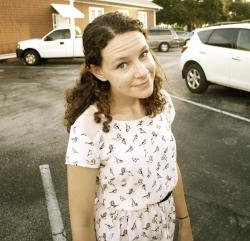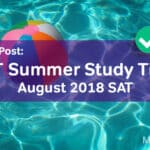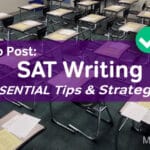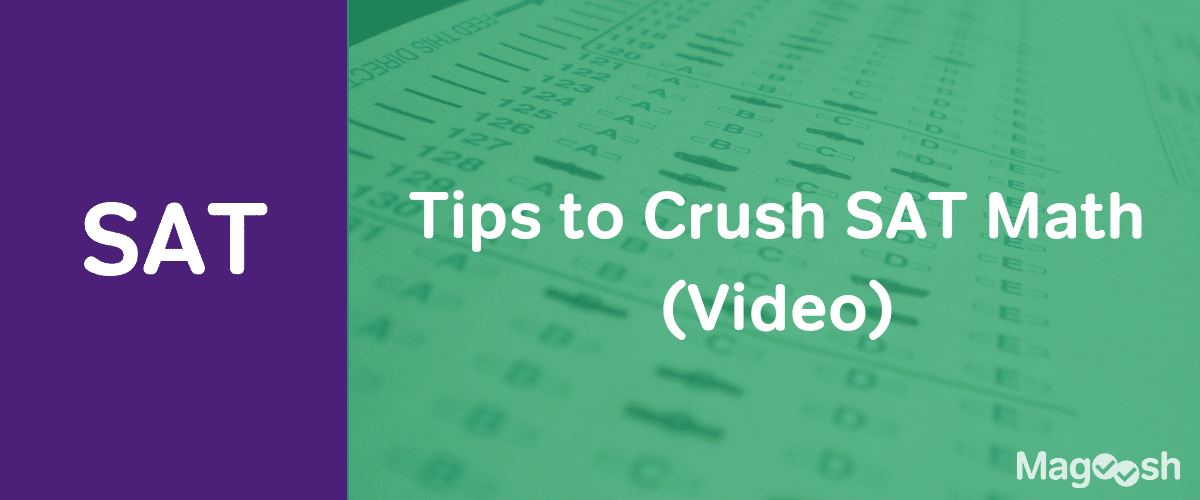It’s Elementary, Dear Watson
Agatha Christie, Nancy Drew, Sherlock… all the greats might look like they pull off incredible sleuthing with nothing more than a trusty sidekick and intuition. But at the end of every Scooby Doo episode, the gang always has to prove they got the right villain!
Command of evidence questions ask test takers to prove their responses based on the passage or graph provided. To get these questions right, you need to find evidence from the passage that proves your choice is the correct one. In true Sherlock fashion, finding evidence involves using clues and looking closely at details.

Clue #1: Line Numbers
On the Reading section, the SAT actually gives you a few different options of line numbers where you can find the answers!
- “Which choice provides the best evidence for the answer to the previous question?”
a. Lines 20-27 (“He thought…yesterday”)
b. Lines 34-40 (“While they…store”)
c. Lines 62-75 (“Being…away”)
There are TWO things to notice here. First, that word evidence shows up! The question literally gives you a heads-up that this is a command of evidence question. Second, check out the word previous. This means that this question is connected to the last question you just answered! If you play your clues right, you can solve two mysteries at one time.
Here’s an example of a question that might come before a command of evidence question:
-
It can most reasonably be inferred that Mrs. Johnson is…
a. Proud of her son’s report card
b. Frustrated by her friend’s comment
c. Uninterested in the daily news
- TIP: Avoiding random guessing.
As you think about your answer choice, pay attention to the specific part of the passage that helped you decide.
- TIP: Go ahead and underline or mark in the margin, so it’s easier to find. Then, when you move into the line number question, you can check your answer.
Hopefully, one of the line number answers matches the section you marked in the passage. If none of the given line numbers match your answer, then you might have to rethink your first answer.
- TIP: Those line numbers can be an extra set of clues!
It’s possible to work backwards, checking each of the line number options to try to find the correct choice for the preceding question. But fair warning…this method can take up extra time, since you’ll be flipping to line numbers throughout the passage.
Clue #2: Charts ‘n’ Graphs
While these aren’t paired questions like on the Reading test, the command of evidence questions on the Writing and Language test are just as easy to spot. These questions are based on charts or graphs, which tend to stand out on a page full of writing. 😉
Graph-based questions test your ability to translate data from a chart into words. This means looking out for overall trends in the chart or graph, and the details of what is being measured.
- TIP: Look for keywords in the answer options.
Pay close attention to words like indicate, predict, increase, and decrease. These are all concepts that might be shown with an arrow or a column in a graph, but you need to make the connection to a word that indicates the same idea.
- TIP: Ask yourself what is being measured.
Don’t forget the text parts of the data, like the flavors of pie on the above chart. You can often eliminate answer options because they include information not given in the graph. If a chart only measures percentage of tastiness, you can eliminate an answer response that includes time, for example. You have no idea if blueberry pie only recently started tasting delicious, based on the given chart.
Keep your sleuth cap on for these easy-to-spot command of evidence questions and you’ll do fine. Remember to find evidence to prove your answer, using the passage or chart given to you. Once all the clues are uncovered, the mystery is solved!






Leave a Reply